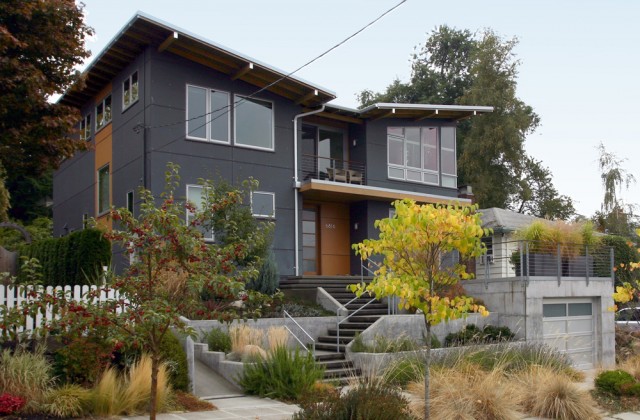Small Lot Legislation: An Architect’s Perspective.
As an architect who specializes in housing, I occasionally get involved in discussions with DPD and the city council about land use issues. In general, I look at proposed legislation from this perspective: What kind of outcomes will the new legislation encourage? Are these good outcomes? If I’m trying to design housing using these new rules, is the code helping or hindering? Am I able to do good work?
Some of the proposed small lot legislation is fine. Much of it is highly technical language that should somewhat even the playing field and help homeowners and neighbors understand which lots have the potential to be split and developed. This will lead to fewer surprises, allow property owners a fair chance to know what they are sitting on when they sell, and allow neighbors know what they should buy if they don’t wish to see development happen next door.
Where the proposal goes off the rails is in its new development standards. The legislation contains a number of restrictive clauses that make it very difficult to build houses that have conventional geometry, logical arrangement, and employ normal construction practices. The height limits are excessively low, prohibiting normal relationships of the floor levels to porches, stoops, roof-lines, and to grade in general. Basements, are for all practical purposes banned, even though they are a typical feature of a Seattle single family home. Side facades are required to be modulated, despite the fact that typical small homes almost never modulate along the side facade. Ironically, this piece of legislation, originally intended to force small lot development to fit better into the existing building fabric, contains numerous prohibitions against building homes that fit with the typical patterns of development in in the existing fabric.
Worse still, the proposed legislation is so focused on handcuffing bad actors that no one seems to have given any consideration to this question: When you take the sum total of all of the “thou shalt not” clauses in this legislation, what is left over for people to build? The answer is an extrusion that completely fills the lot up to the setbacks. How do I know this? Because the proposal provides absolutely no exemptions for beneficial design features. There are no lot coverage or setback or structure depth exceptions for front porches, decks, stoops, eaves, or similar features that break down the massing of a house, create visual interest, increase livability, etc. Any project that provides these features does so directly at the expense of the overall development potential. Incentives matter. This proposal forces developers to choose between good design practices and a healthy pro-forma.
These defects are known to the planners at DPD. They understand them and fully appreciate them. I suspect if their mandate in writing this proposal was to come up with a way to facilitate better small lot development, the outcome would be quite different. Instead, the City leadership has a pitchfork mob at their door with a list of demands, and they have directed DPD to take dictation.
There is a better way to do this. You begin with the outcome that you want – a positive vision (a list of the things that you dislike that you would like to prohibit does not count). You look at the structural incentives, and you design a code that provides tangible rewards for people that provide desirable features in their projects. You make cracking the development potential of the site contingent on providing the desired outcomes.
As of today, if this legislation passes, we will have created small lot legislation that virtually guarantees the development of housing that is poorly designed (albeit somewhat shorter than it would have been otherwise). Perhaps if you view developers and builders as a malign force bent on destroying the fabric of our society, you think that’s the best that can be done. If, on the other hand, you view them as rational actors that respond to incentives, you realize these homes will be poorly designed because we asked them to build exactly that.
 David Neiman is the principle of Neiman Taber Architects, a residential architecture firm specializing in housing adapted to the Pacific Northwest climate. David was also been a leading (and successful) proponent of making significant changes to the multi-family code
David Neiman is the principle of Neiman Taber Architects, a residential architecture firm specializing in housing adapted to the Pacific Northwest climate. David was also been a leading (and successful) proponent of making significant changes to the multi-family code


